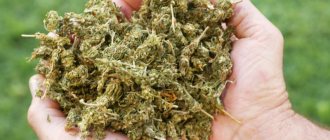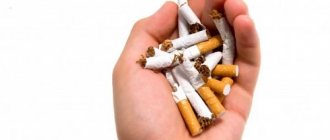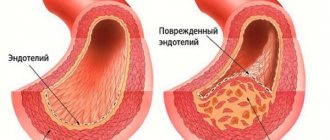The decision to give up cigarettes is stressful for a person. Everything that happens to the body after quitting smoking is manifested by severe symptoms in all internal organs. Such changes can scare anyone. The first days without nicotine are especially difficult, when withdrawal symptoms develop in response to the absence of the usual doping drug.
A smoker’s diary can help patients cope with the situation, in which the addict himself describes in detail everything that happens to him over time, understanding cause and effect.
[toc]
Positive points
Complete cessation of tobacco significantly reduces the risk of numerous diseases: bronchitis, tracheitis, laryngitis, pneumonia, asthma, pneumonia, destructive pathologies of the bronchi. Varicose veins, thrombophlebitis, obliterating endarteritis, and diabetic foot will recede. Cholesterol levels are normalized, and along with it, the development of atherosclerosis of large arteries that supply the brain and heart, kidneys and liver will be inhibited.
This will prevent heart attacks and strokes.
Tobacco smoke is a powerful intoxicant. Cleansing organs and tissues of its metabolites will enable the body to start the process of self-healing. Clean blood flow will fill the cells with nutrients and oxygen, which will relieve headaches, fatigue, irritability, and balance blood pressure. Since cigarettes contain about 90 carcinogens, blocking and removing them will prevent cancer.
Surprisingly, such changes will begin within the first hours without nicotine. Its trace reaction will still be present for some time, but for some in a week, for others in a month it will disappear without a trace. It is more difficult with the psychological attachment to the pleasure of nightshade poison.
Stress must be dealt with consistently and wisely. You cannot neglect anti-tobacco medications; you need to organize rest and interesting leisure time. Sometimes it is useful to entrust your experiences to paper.
It’s so nice to know that you “earned” a trip or a trip to the theater by refusing to buy tobacco products. Saving can be very useful.
Third and fourth days
The body's recovery after smoking lasts differently in each case. When smoking cigarettes, people often don't notice the changes because they primarily occur at the cellular level. Cleansing the body after quitting smoking involves complete recovery, the body of the former smoker begins to release a large amount of toxins, and the cellular structures begin to change, their radical cleansing occurs.
What happens if you quit smoking on days 3 and 4 of the calendar:
- The ciliated epithelium on the surface of the respiratory system organs begins to recover.
- The level of alkaline fractions in the pancreas begins to increase, and in parallel there is a decrease in the production of mucus in the stomach.
- Blood circulation in the heart apparatus and in the brain improves.
- The craving for nicotine at the cellular level decreases.
Normalization of peristalsis in the digestive system also often occurs. How does the body cleanse itself after quitting smoking on an emotional level? The diary of a non-smoker says that on these days of the quitting smoking calendar there is an increase in nervousness, and a symptom of psychological “withdrawal” appears. The person does not find a place for himself, there are significant difficulties in falling asleep, the sleep is intermittent, superficial. Sudden mood swings are also noted.
How does a smoker’s body recover at the physiological level? There is a sharp increase in appetite, it either increases or decreases, a craving for sweets appears, and heartburn and belching may bother you. There are often dizzinesses, the heart contracts, and sometimes swelling of the face and fingers appears. The skin begins to peel, bladder emptying improves, and the cough is complemented by the sensation of a lump of phlegm in the throat.
Unpleasant details
It should be understood that parting with nightshade alkaloid is very difficult due to the following points:
- Pyridine poison increases the emotional level, which, in turn, helps to concentrate in difficult situations.
- The joy hormone produced in response to nicotine relieves stress and helps overcome grief.
- Nightshade alkaloid creates the illusion of peace, gives self-confidence, and causes moral satisfaction.
Such positive effects are difficult to forget, and even more difficult to part with.
Acetylcholine receptors, which are accustomed to tobacco poison, require its presence. As a sign of protest, they trigger withdrawal symptoms. If at the beginning of smoking the pleasure from a cigarette lasted for a couple of hours, then over time such an emotional upsurge lasts for half an hour. This means we need to increase the amount of doping.
Otherwise, the feeling of discomfort will significantly exceed the strength and severity of euphoria.
Abrupt parting with a cigarette makes the unpleasant sensations unbearable. This is a real break. Something needs to be done to compensate for the deficiency of nicotinic acid, a metabolite of tobacco poison, otherwise it is impossible to cope with irritability, which transforms into aggression.
In addition, there is:
- Loss of attention.
- Craving for tobacco products.
- A fierce feeling of hunger.
- Inability to sleep.
- Hyperhidrosis.
Only a specialist can help in relieving withdrawal symptoms.
What physical and emotional changes occur in the second week?
It would seem that the most difficult stage is over, but everything is not simple. The body begins to strongly resist the will of the smoker and the consequences of refusal begin to manifest themselves.
Eleventh and twelfth days
The blood supply and functioning of the gastrointestinal tract have normalized, inflammation of the bronchopulmonary system subsides, but quitting smoking begins to affect hormonal levels.
External manifestations:
- My head is spinning;
- Hands are shaking;
- Migraine;
- Increased internal tension;
- Increased feeling of hunger;
- The skin turns pink (especially on the face);
- Coughing attacks begin to subside;
- The stool returns to normal.
An ex-smoker feels most vulnerable and needs support.
External manifestations:
- Depression;
- Attacks of aggression;
- Hysterical attacks;
- Emptiness;
- Increased desire to smoke.
Thirteenth and fourteenth days
The bronchi have healed, the blood is gradually renewed, the blood vessels are restored, and the skin epithelium is being restored.
Externally:
- Attacks of weakness;
- The pressure jumps;
- General weakness;
- Overwork;
- The color of the skin on the hands is restored;
- The coughing attacks subside.
The end of the second week is a turning point:
- There is a desire to “reward” yourself for a long time without a cigarette;
- Smoking is perceived as a reward;
- Improved mood;
- Pride in what we have achieved.
The body's reaction to gradual and abrupt cessation of tobacco products
Each person is individual, as is their decision to quit smoking. Some people prefer it right away, while others need time. The body reacts differently to the chosen method of quitting tobacco.
If we are talking about a chronic consumer of nightshade alkaloids, then it will not be possible to say goodbye to nicotine quickly; it will be a slow and painful process. A novice tobacco lover has a chance to simply stop communicating with cigarettes; his self-healing system will cope.
However, most often the reaction to the absence of habitual doping is manifested by abstinence or withdrawal syndrome.
In essence, this is a restructuring of the entire organism, accompanied by:
- Strong craving for tobacco.
- Unreasonable nervousness.
- Conditions close to fainting.
- Depression.
- Loss of strength.
- Minor mood.
- Anxiety with the development of phobias.
- Bradycardia.
- Skin rashes.
- Aphthous lesions of the oral mucosa.
- Constant discomfort of the upper respiratory tract: shortness of breath, cough, tickling, rhinorrhea, lacrimation.
- Digestive system disorders up to colic.
Each of these symptoms can manifest itself individually or as part of several disorders at once. The severity of symptoms varies from person to person.
Sometimes there is no abstinence.
How long does it take to crave a cigarette?
The desire to smoke in a person who has decided to give up nicotine persists for quite a long time. It becomes especially strong on the second day, when the former smoker is subject to severe irritation and produces inadequate reactions to ordinary situations.
An important point: young women tolerate nicotine withdrawal somewhat easier.
The first month of quitting is considered the most difficult, this is due to the exacerbation of chronic diseases that smokers have. Physical illnesses, coupled with moral suffering, become an insurmountable factor for many that causes a return to smoking.
In general, the restructuring of the body occurs at different rates in different people. The process of weaning takes six months or more.
A person can exist with a psychological desire to smoke for a very long time: up to 5 years. It is difficult to be around people who smoke or in a room where there is the smell of cigarettes.
A person who quits smoking experiences a withdrawal syndrome characterized by:
- The occurrence of a strong cough, with the obligatory discharge of brown sputum.
- Decreased immunity and, as a result, increased incidence of colds.
- The main consequence is the appearance of a constant feeling of discomfort and irritability, which ceases over time.
- Often a reaction occurs in the form of headaches and discomfort in the gastrointestinal tract.
Stages of cleansing
The process of getting rid of nicotine metabolites is complex, but it begins from the first minutes of quitting cigarettes, going through a number of stages.
| Failure time | Changes in the body |
| Half an hour | Tachycardia passes, blood pressure begins to normalize, the kidneys work more intensely, preparing to remove toxins. |
| A couple of hours | The kidneys remove metabolites of pyridine poison from the blood. |
| Half a day | The blood is saturated with oxygen, carbon monoxide is removed from the lungs. The kidneys continue to remove nicotine, and withdrawal symptoms develop. |
| Day | The nightshade alkaloid is completely removed, there is no replacement for it, and abstinence occurs. |
| In a few days | The lungs begin to cleanse themselves of the tar and toxins from the cigarette. A cough appears - a natural reaction to accumulated soot. |
| On the third day | Lung cleansing continues. A strong feeling of hunger develops, since tobacco poison has ceased to block the brain's satiety center, and it is restored, causing a person's appetite. In addition, blood pressure normalized, which causes tinnitus due to the saturation of neurons with oxygen and blood flow to the brain. |
| Fourth day | Blood circulation returns to normal. The mucous membrane of the digestive tract regenerates, and the pancreas begins to function normally. Sticky sputum comes out. |
| Fifth day | An intense wet cough with rust-colored sputum from soot continues, and taste is restored. |
| Sixth day | Painful cough and irritation due to lack of nicotine. There is a desire to return to a cigarette. |
| A week | Metabolites and toxins are removed. Organs and tissues have partially recovered or are beginning to do so. The liver again synthesizes endogenous nicotine, the physiological need for it is satisfied. A debilitating cough persists. |
| Eighth day | Both taste and olfactory receptors are restored, food takes on meaning and becomes tasty. The person eats a lot and gets better. The blood vessels are not yet stable, and blood pressure surges are a concern. The nervousness gradually passes. |
| Ninth day | The stomach has restored secretion. The intestines in the process of this, pain appears in the lower abdomen, problems with stool. At this time, aphthous stomatitis, herpes, and acute respiratory infections may develop. |
| Ten days | The cough continues. Immunity begins to recover. The emotional state is difficult. We need help and support from loved ones. |
| 11-14 days | Vascular tone is restored, blood flow is normal, dizziness and hand tremors occur due to active oxygen saturation. The cleansing of the lungs continues. Have problems sleeping. |
| Second half of the month | The mucous membranes of the bronchi regenerate, the cough subsides, the immune system works at full capacity, the skin acquires a normal shade, the blood pressure is normal, there is no dyspepsia. Many people decide that everything is over and they can try a cigarette. If this happens, it all goes back to the first days of withdrawal. |
| Next three months | Starting from the second month, the body’s functioning levels off. The systems work smoothly. Toxins are eliminated using all natural methods. Hair, skin, nails become much better. The lungs continue to recover. Metabolism and blood pressure are normalized, weight stabilizes. But withdrawal still makes itself felt. |
| Six months | The hematopoietic system has been completely restored. The cough stops. Sleep is normal. The liver has been regenerated. To speed up the cleansing of the lungs, physical exercise is included. |
| Ten months | This is a milestone when a breakdown is possible due to the fact that: smokers begin to dream about cigarettes, in the morning there is a strong desire to take a bite of a tobacco product, and sleep is disturbed. This is how brain activity changes without nicotine. Here the ligaments are restored, the voice acquires its usual timbre. Teeth become white and bad breath disappears. |
| Year | Almost all organs and tissues are renewed. The lungs may still be in the process of recovery. Potency is excellent, reproductive function is normal. There is practically no desire to smoke. “Tobacco diseases” are disappearing. |
| Two years | The lungs have recovered. The brain is eating normally. The body is so clean that an accidentally smoked cigarette will be perceived as being smoked for the first time. You can plan a pregnancy. |
| Five years | The risk of stroke is compared to non-smokers. |
| Decade | The likelihood of developing lung cancer is the same as someone who has never put a cigarette in their mouth. |
| Fifteen years | The risk of heart attack is compared with non-smokers. |
Many changes in the body cannot be restored, and over time become triggers for cell malignancy.
These include:
- Destruction of the alveoli of the lungs, which failed to free themselves from tars and carcinogens.
- A long-term non-regenerating burn of the oral mucosa, which can transform into hyperplasia and cancer of the lip.
- Toxic damage to the oropharynx resulting in cancer of the larynx and throat.
What is the best way to quit smoking?
People share stories on online forums about how they quit smoking. You can take note of several methods of motivation, breathing exercises or habits, but it is not recommended to fully follow their example. It is important to remember that each person has an individual body structure.
In order not to smoke, you need to constantly motivate yourself to achieve your goal and share your feelings.
During the period of quitting cigarette addiction, the psycho-emotional state is disrupted, which can lead to a breakdown. Physiologically, only positive improvements are observed - cells and tissues are intensively renewed, nicotine and other harmful substances are eliminated.
It is necessary to select activities that would help replace a cigarette and at the same time bring pleasure. Nicotine patches help some, pills help others, and hobbies help others.
Positive aspects of quitting smoking
After quitting smoking, a person feels a surge of strength and the beginning of recovery:
- the body gradually gets rid of synthetic compounds and toxins;
- serum hemoglobin level increases;
- the functioning of the cardiovascular system is normalized, tissue microcirculation is improved;
- as soon as the realization comes that “I don’t smoke,” your mood improves and a feeling of pride appears;
- lung volume increases;
- the risk of developing cancer, hypertensive crisis, respiratory and vascular pathologies is reduced.
Negative aspects of quitting smoking
As soon as a person says to himself “I’m quitting smoking” and gives up cigarettes, the body begins to change the rate of metabolic processes, the production of hormones and neurotransmitters. Despite the overall positive dynamics, these restructurings are accompanied by a number of negative aspects:
- The functioning of the immune system sharply decreases. The number of colds increases because the respiratory organs remain weakened during regeneration. Stomatitis and ulcerative lesions of the oral mucosa may occur.
- Violations of psycho-emotional control are observed. The person becomes aggressive and irritable, often falls into a state of apathy and is susceptible to depression.
- Sleep disturbances begin: insomnia, daytime sleepiness, nightmares.
- Intense blood supply to brain tissue leads to the development of headaches and dizziness.
- In the first months, due to the restoration of the functioning of taste buds, people gain excess weight. An increase in appetite is also due to the development of stress - a person instinctively tries to replace emotional shocks and cigarettes with food.
Physiological state
Many people wonder what will happen if they quit smoking. After quitting cigarettes, a person feels light. He breathes freely and gradually gets rid of accumulations of tobacco tar from the mucous membrane of the lungs and bronchi. The epithelium, which has been intoxicated by nicotine, is renewed. The body completely renews damaged cells and removes synthetic compounds.
The doctor will help answer the question of what to eat when you quit smoking, and how to motivate yourself to achieve your goal. If necessary, the specialist will select medications. At the same time, he should warn that the medications will create a load on the liver and recommend giving up the bad habit on your own. Hepatocytes must be restored, therefore, to maintain their regeneration, you should not eat fatty, fried and spicy foods.
Doctors' recommendations
On a non-smoking day, experts recommend doing work or sports. In addition to internal motivation, you need to enlist the support of others and periodically reward yourself with small gifts. Such actions will improve your psychological mood.
Intense training will help normalize metabolism and improve blood supply to tissues. Increased functional activity of the cardiovascular system will normalize the supply of oxygen and nutrients to cells.
Traditional medicine tips
There are several recommendations from alternative medicine that can facilitate the process of quitting tobacco addiction:
- Nervousness and increased irritability can be eliminated by tea with blackberries or berry jam. To make a decoction, you need to pour 2 tablespoons of boiling water. dried blackberry collection and leave the mixture for 2 hours. If desired, you can add 1 tsp to the tea. honey It is recommended to take the decoction 3 times a day 20 minutes before meals. Eat only 2-3 tsp of jam. in a day.
- For dizziness, a herbal decoction of dry yarrow, St. John's wort and chamomile flowers helps. You need to mix 100 g of each ingredient. 1 tbsp. The resulting mixture should be poured with 500 ml of boiled water and the broth should be infused with the lid closed for 25 minutes. You should drink the resulting infusion 250 ml before bedtime. If desired, you can add linden honey to the liquid.
- Heartburn, nausea, and pain in the epigastric region can be eliminated by honey dissolved in a glass of warm water. The product must be taken 90-120 minutes before breakfast or lunch break, 3 hours after an evening meal.
Quit smoking calendar
To help everyone who has decided to free themselves from nicotine captivity, psychologists recommend keeping a corresponding diary of their feelings, emotions, and thoughts.
The structure of these records consists of several sections:
- The first is devoted to the changes that occur in the body day by day. It describes in detail the disappearing symptoms of tobacco poisoning related to each system: nervous, cardiovascular, digestive, pulmonary, endocrine, reproductive, genitourinary. In addition, the emergence of new symptoms, both negative and positive in dynamics, is noted.
- The second is for emotions and thoughts. Here, an analysis is carried out at the sensory level of everything that happens to the patient, self-hypnosis and self-control are used.
- The third section is physiology. What the patient is drawn to, what he wants to eat, where it hurts, what his sleep is like, what the skin looks like, the degree of shortness of breath and the severity of the cough. Everything that worries you is at the level of physiological transformation.
- The fourth section is the doctors’ recommendations and how they are implemented.
- Fifth - traditional medicine recipes and their use.
- Sixth – physical exercise, what works, what doesn’t, the result.
- The seventh section is help from loved ones. Their advice, requests to them. Planning strategies and tactics of behavior for the future.
Many who have given up addiction emphasize the usefulness and necessity of such a diary.
What happens after 2 months
There is an increase in lung capacity, which reduces the risk of bronchial diseases and cancer of this organ. A person will not experience shortness of breath and cough during physical activity, the body returns to its shape and weight returns to normal.
General physical activity increases. Small meals help in the fight against weight; it is useful for restoring the functioning of the stomach - getting rid of discomfort (diarrhea, heartburn, nausea).
The tissues of the lungs and bronchi are actively restored, the mucous membranes of the internal organs are gradually renewed.
The blood is completely renewed, improving the overall condition, which has a positive effect on the appearance of the skin and helps cell regeneration. A person who has given up nicotine addiction looks younger, wrinkles are smoothed out.
Giving up a bad habit helps normalize the functioning of the central nervous system - tachycardia ceases to bother you, healthy sleep returns, and general irritability disappears.
Take the smoking test
How to speed up cleansing?
Despite the fact that the body is a self-regulating system, there are ways to speed up the recovery process from nicotine intoxication:
- Sport. Movement is life, so dosed physical activity is recommended for smokers from the first day of quitting the bad habit. Running, for example, will intensify contractions of the diaphragm, stimulate lymph flow, that is, it will help remove toxins from the body. Cardio exercise will also affect your blood. Breathing exercises will saturate the lungs with oxygen and help them cleanse themselves of tars, carcinogens, and toxins. Your health will improve significantly.
- Medicines for cleansing. Ascorbic acid, B vitamins, folic acid compensate for the lack of microelements and biologically active substances necessary for normal metabolic processes. They will be helped in this by: chromium, zinc, nickel, selenium, manganese. Amino acids will support the synthesis of immunoglobulins. Vitamin A will act as an immunostimulant.
- Food products. Cranberries, ginger, spinach are natural stimulators of hematopoiesis and blood supply to the lungs during their recovery.
There are so many helpers who can ease the difficult process of saying goodbye to nicotine, restore health, and prolong life.
Further changes
Starting from the second month, the nervous system gets used to working without nicotine. Active removal of accumulated toxins occurs: through the skin, respiratory organs, and gastrointestinal tract.
Thanks to cell renewal, the condition of the skin improves significantly: the appearance of acne decreases, pimples and inflammation disappear. Improvements also affect the condition of the hair - it splits less and looks more shiny.
The third month of life without cigarettes is characterized by normalization of metabolism - appetite stabilizes, the desire to constantly eat disappears. There is an improvement in the absorption of proteins - even in the absence of serious sports activities, muscle mass increases, and the fat layer decreases (with proper nutrition). Blood pressure levels are normalized.
Regeneration of lung cells begins only from the fourth month and the process itself can last for many more months - it depends on the length of smoking. It is possible that sputum may be discharged interspersed with blood - this is normal, as the alveoli are damaged. However, it is recommended to visit a doctor just in case.
It happens that at this stage people often try to smoke, proving that this is a completely controlled process. This cannot be allowed to happen – it will set us back several months.
After 5 months, the functioning of the liver is restored - the organ that had the highest load, since it is the liver that removes toxins from the body.
Eighth, ninth and tenth day
If the non-smoking stage continues into the second week, a more acute sense of taste and smell appears - this is especially noted in the diary. At this time, a non-smoker may already have complete restoration of enzymes in the digestive system. Hematopoiesis improves. If a person does not smoke cigarettes, his respiratory system can recover as quickly as how intensely the person previously smoked. If you read the smoking cessation calendar table by day, you will notice that physiological sensations change for the better in the second week. The taste of food is already clearly felt, but the appetite is still increased, the pressure decreases.
Interestingly, in the second week a clear aversion to tobacco smoke may occur; smoked nicotine sometimes even causes vomiting and dizziness. The appetite, as before, is increased, and the body’s resistance to viruses sharply worsens, you can get ARVI.
How does the body recover after an emotional failure? This period is described in the diaries as easy for the smoker’s body; in the second week it is much easier, and the vegetative manifestations of nicotine addiction decrease. Breakdowns are still possible, but this entire period is easier, there is an incentive to move forward, to cleanse the body completely.











